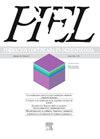与特应性皮炎患者光疗反应相关的因素
Q4 Medicine
引用次数: 0
摘要
特应性皮炎是一种炎症性皮肤病,是特应性谱的一部分,在所有皮肤病中疾病负担最高。本研究的目的是分析诊断为特应性皮炎的患者接受窄带UVB光疗(UVB NB)的治疗反应。方法对2015年至2022年在某参考中心接受UVB NB光疗的280例患者进行回顾性随访研究。改善的定义是通过在随访中观察到的湿疹病变症状的减轻和疾病的临床控制而没有复发来确定的。在统计分析中,连续变量的结果以均值和标准差表示,并对名义变量进行双变量分析。结果患者改良率为72.14%,其中女性69.8%,平均年龄21.22±11.65岁。观察反应的平均次数为16.8次,大约需要5.6至8.4周。它与对光疗的耐受性、治疗次数和最高耐受剂量显著相关。结论suvb NB光疗对特应性皮炎患者有改善作用。为了确定其更大的有效性并确定其与疾病相关因素的关系,将来有必要对对照样本进行研究。本文章由计算机程序翻译,如有差异,请以英文原文为准。
Factores asociados a la respuesta al tratamiento con fototerapia en pacientes con dermatitis atópica
Introduction
Atopic dermatitis is an inflammatory skin disease that is part of the atopic spectrum, and it has the highest disease burden among all dermatoses. The objective of the study is to analyze the response to treatment of patients diagnosed with atopic dermatitis who received narrow-band UVB phototherapy (UVB NB).
Methods
A descriptive follow-up study was carried out on a cohort where information was retrospectively collected from 280 patients who attended UVB NB phototherapy in a reference center between 2015 and 2022. The definition of improvement was determined by a decrease in the symptoms of eczematous lesions and the clinical control of the disease without relapse in the follow-up observed in the patient controls. In the statistical analysis, the results of the continuous variables were expressed in means and standard deviation and a bivariate analysis of nominal variables was performed.
Results
The improvement rate was 72.14% of patients, 69.8% in women, with an average patient age of 21.22 ± 11.65 years. The average number of sessions to observe response was 16.8 sessions, which takes approximately between 5.6 and 8.4 weeks. It was significantly associated with tolerance to phototherapy, the number of sessions and the highest tolerated dose.
Conclusions
UVB NB phototherapy achieves improvement in patients with atopic dermatitis. The need for a controlled sample in the future will be necessary to determine its greater effectiveness and determine its relationship with factors associated with the disease.
求助全文
通过发布文献求助,成功后即可免费获取论文全文。
去求助
来源期刊

Piel
Medicine-Dermatology
CiteScore
0.10
自引率
0.00%
发文量
179
审稿时长
47 days
期刊介绍:
La mejor revista para incrementar eficazmente sus habilidades diagnósticas y clínicas en dermatología, por la alta calidad de sus imágenes e iconografías, por el prestigio de sus colaboradores y por la actualidad de sus temas. Una publicación de máxima utilidad práctica para Especialistas y Profesionales de Atención Primaria.
 求助内容:
求助内容: 应助结果提醒方式:
应助结果提醒方式:


